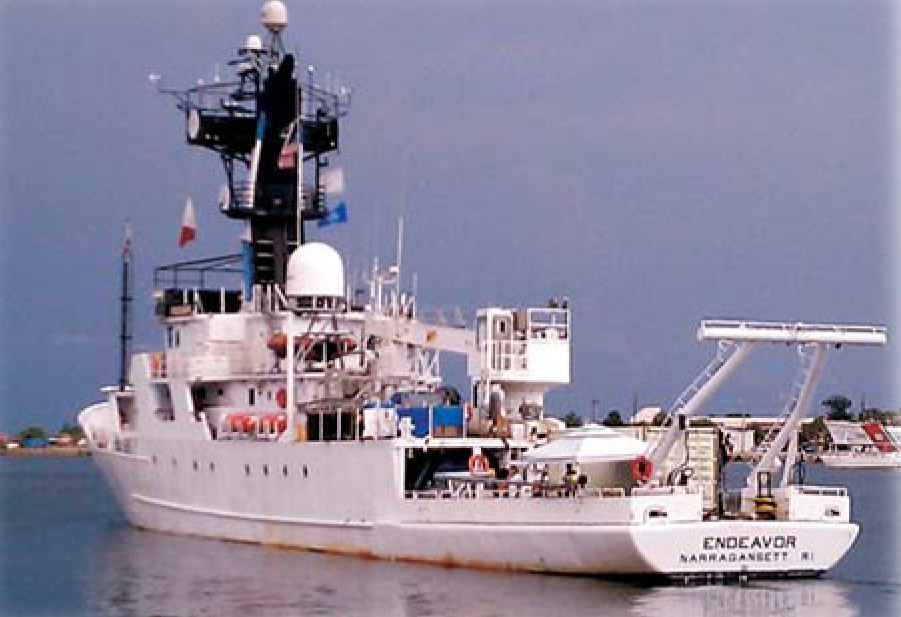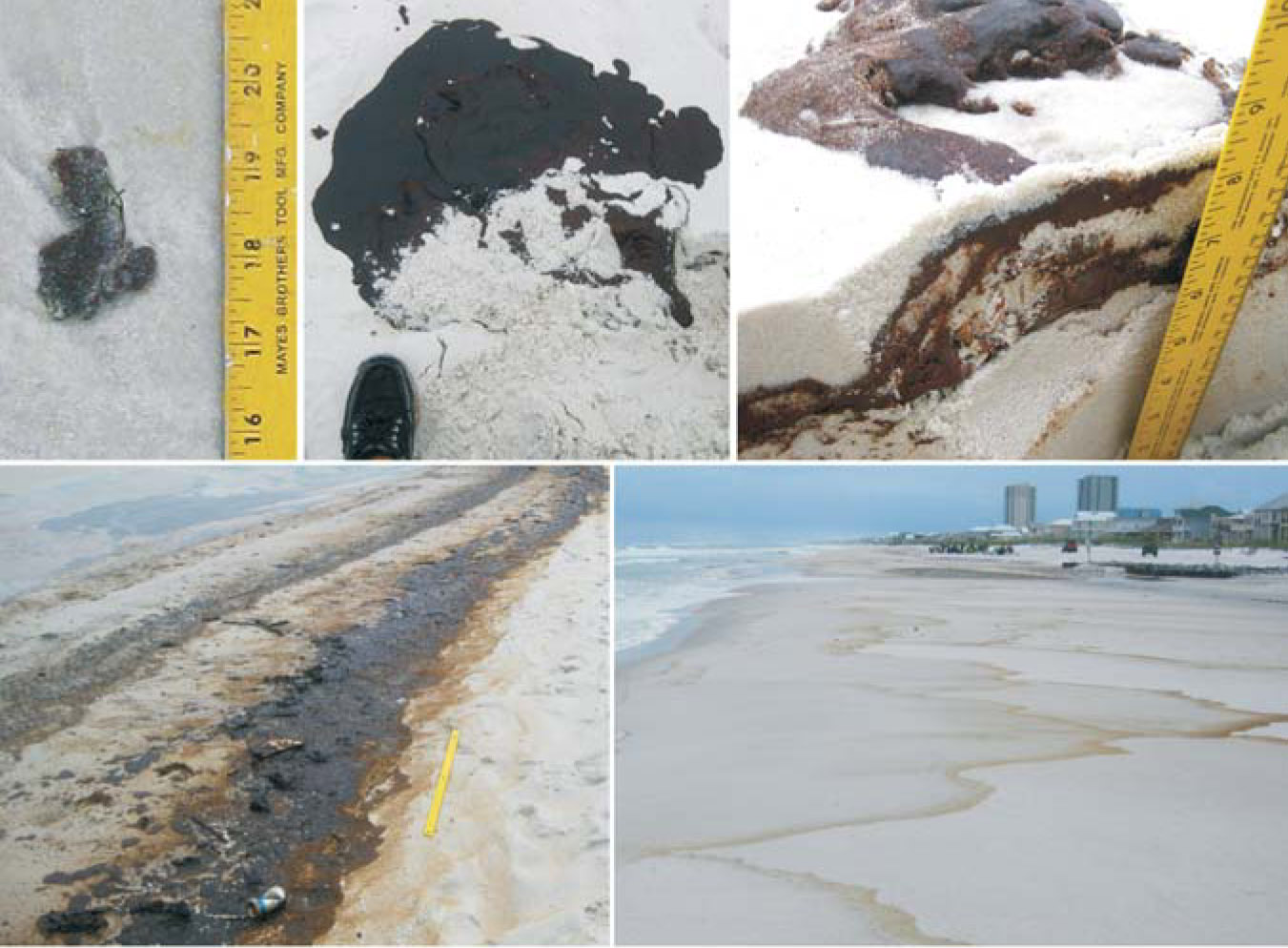NSF speeds funding for research on BP oil spill
DOI: 10.1063/1.3490491
For David Schiraldi, a chemistry professor at Case Western Reserve University, getting an NSF award to study a novel material for soaking up oil was “phenomenal.” The entire process, from filling out the brief five-page application “in one sitting” to receipt of his funding, took less than a month. It was, he says, “the best grant experience of my career.”
Schiraldi’s experience is being shared by dozens of other academic scientists who are studying various impacts from the millions of barrels of oil that spewed from BP’s blown well in the Gulf of Mexico in April. The disaster has spotlighted a special grant mechanism, known as Rapid Response Research (RAPID) that NSF has used to support urgent research that can’t wait for the agency’s standard proposal-review process. The environmental calamity in the Gulf, when combined with the Haitian and Chilean earthquakes, has made 2010 a busy year for RAPID awards. As Physics Today went to press, NSF had awarded a total of $8.9 million for 79 such grants in connection with the BP spill; the bulk of that supports researchers who are gathering data as the event continues to unfold.
To be sure, other federal agencies, including the National Oceanic and Atmospheric Administration, the Environmental Protection Agency (EPA), the US Geological Survey, and NASA, also have been deploying scientists and research assets to the Gulf. Six of NOAA’s eight Atlantic fleet research vessels and numerous aircraft were deployed to collect data and images of the slick and provide input to models that tracked its spread. An interagency effort led by NOAA produced the government’s controversial early August analysis estimating that of the 4.9 million barrels of oil that spewed from the damaged well during nearly three months, only 26% remained in the Gulf. NASA’s Multi-angle Imaging Spectro-radiometer provided dramatic false-color views of the spill from the orbiting Terra spacecraft. An EPA review of dispersants found that the product used by BP was no more toxic than alternative chemicals.
But academic researchers say RAPID may be the sole program among federal agencies that can respond so quickly to their needs. “Typically, research proposals require months for turnaround. Weeks would be considered fast; days is astonishing,” says Richard Camilli of the Woods Hole Oceanographic Institution. Camilli was the principal investigator for one of three RAPID-funded research teams that crowded aboard the NSF-owned Endeavor in the Gulf.
Ephemeral data
Dennis Wenger, NSF’s disaster program manager, says the foundation has a history of accommodating researchers who must gather their data during or soon after a disaster. Until a few years ago, such “ephemeral data” grant proposals were lumped in with requests for funding high-risk, high-impact research in a program known as Small Grants for Exploratory Research (SGER). What the otherwise disparate types of proposals share is a need to be reviewed outside NSF’s external peerreview process, which, NSF officials say, tends to favor incremental, sure-bet scientific projects.
Funding requests for data-gathering activities poured in after Hurricane Katrina in 2005; NSF scrambled to locate funding and award roughly $5 million in the final month of that fiscal year. The agency then decided to split SGER into two new award mechanisms—RAPID and EAGER (Early Concept Grants for Exploratory Research). The RAPID proposals are given a quick internal review by the relevant NSF program officer, who may also seek assessments from two or three other program officers, particularly if the proposal exceeds $40 000, says Wenger. NSF directorates may spend up to 5% of their budgets for RAPID grants, and individual awards are capped at $200 000. But Wenger, for one, believes that smaller is better. “If I have a choice between a $200 000 RAPID and five $40 000 RAPIDs, I’m going to opt for the five most times.”
Recipients of Gulf-related RAPID grants give the program high marks. “The turnaround time was faster than I had expected, literally just days,” says Camilli, whose $131 000 grant supported gathering the data he needs to map the subsurface oil plume. “I was most satisfied with the team at NSF biological oceanography,” echoes Susan Bell, a biologist at the University of South Florida, who had her $128 000 grant for studying the impact of the oil on beach ecosystems approved in just 22 days. Karl Linden, an engineering professor at the University of Colorado at Boulder, says it took about six weeks from submission of his proposal to arrival of the funding on his $82 000 grant to study the sunlight-driven decay of the dispersants used to diffuse the Gulf slick. That was, he says, “a bit slower than I would have liked, but we can live with [it].“
Surreal scene
Awardees say NSF also did a good job of alerting them to the availability of the grants. Schiraldi says the program was “very well advertised” through e-mail blasts to both faculty and university research administrators. Linden credits previous familiarity with the RAPID program for allowing him to get “ahead of the game” and submit his application before NSF’s notification went out. Bell says the program is well known, “especially by those of us older types that remember the SGER program.” Paul Painter, a materials science professor at the Pennsylvania State University, says the speedy review and award process allowed him to commit to a student who wants to work on developing technology to separate oil from sand. Similarly, Schiraldi says his award will let him continue employing a graduate student who is already familiar with the material.
For Camilli, this summer’s NSF-sponsored trip was his second visit to the site of the blown well; in late May he led a team of scientists assembled by the US Coast Guard to estimate the rate at which oil and gas were gushing. For that effort, BP provided a remotely operated vehicle to sample and image the plume. During Camilli’s more recent visit aboard the Endeavor, subsurface seawater sampling continued around the clock.
Coast Guard, NOAA, and EPA scientists also joined the crew to ensure that samples and data to assess the extent of environmental damage were acquired in accordance with protocols established by the Oil Pollution Act of 1990. Camilli recalls the “surreal” scene of 80 ships and multiple drilling rigs floating within a three-mile radius of the blown well. The flaring of gas and oil was visible for “tens of miles,” he says, creating a roar not unlike a jet engine. The humid air was further thickened by a range of light hydrocarbons, including carcinogenic benzene. At one point, Camilli, the chief scientist aboard Endeavor, had to order the vessel to leave its sampling position when the vapors exceeded limits deemed safe.
Straying from guidelines?
Most Gulf-spill-related RAPID awards are for data-gathering projects, but some are going to activities that seem to stray from NSF’s guidelines requiring that funds go to “proposals having a severe urgency with regard to availability of, or access to data, facilities or specialized equipment, including quick-response research on natural or anthropogenic disasters and similar unanticipated events.” BlueInGreen LLC of Fayetteville, Arkansas, for example, received a $175 000 RAPID grant to try out its proprietary technology for injecting dissolved oxygen into some of the contaminated coastal bays and estuaries. If the results are successful, the added oxygen could boost the rate at which microbes biodegrade the oil. The federal Small Business Innovative Research (SBIR) program, which is explicitly designed to help small companies develop and commercialize their technologies, is the source of funding for that grant. BlueInGreen has previously received $800 000 in SBIR grants over fiscal years 2004-07 to develop its oxygenation technology, according to Small Business Administration records. Like other major scientific agencies, NSF is required to set aside 2.5% of its research budget each year for competitively awarded SBIR projects.
An NSF spokesman says the agency has not relaxed the RAPID criteria to accommodate oil-spill proposals. The program has never restricted awards to just those that collect ephemeral data; what is common to all its awards is their urgent nature, he says. Thus, program managers saw an urgent need to fund proposals for technologies that could help clean up the Gulf pollution, particularly while the well was still leaking, he explains.
Schiraldi’s $96 000 RAPID grant is funding the development of technology that he doesn’t believe will be ready for deployment in the Gulf cleanup. He says the work will provide a scientific understanding of how an aerogel material invented in his lab can soak up as much as eight times its weight in oil from water surfaces and then be wrung out for reuse. He hopes the cost of the material can be lowered, so that the technology can be used during the next big spill and for cleaning up routine spills at refineries and marinas. In another case, researchers at the University of Central Florida received a $67 000 grant to develop a chemical process they hope will turn fly ash, a waste product from coal burning, into a low-cost, recyclable oil absorbent.

Three research teams sailed aboard the NSF-owned research vessel Endeavor in June and collected samples of and data on oil-contaminated waters in the Gulf of Mexico.
NSF


In a research project funded by NSF’s Rapid Response Research program, Ping Yang and others at the University of South Florida identified multiple forms of oil contamination along Alabama and northern Florida beaches. Clockwise from upper left, the forms are tar ball, tar patty, tar cake, oil stain, and oil sheet. Measuring stick is one yard long.
PING YANG, UNIVERSITY OF SOUTH FLORIDA

More about the Authors
David Kramer. dkramer@aip.org




